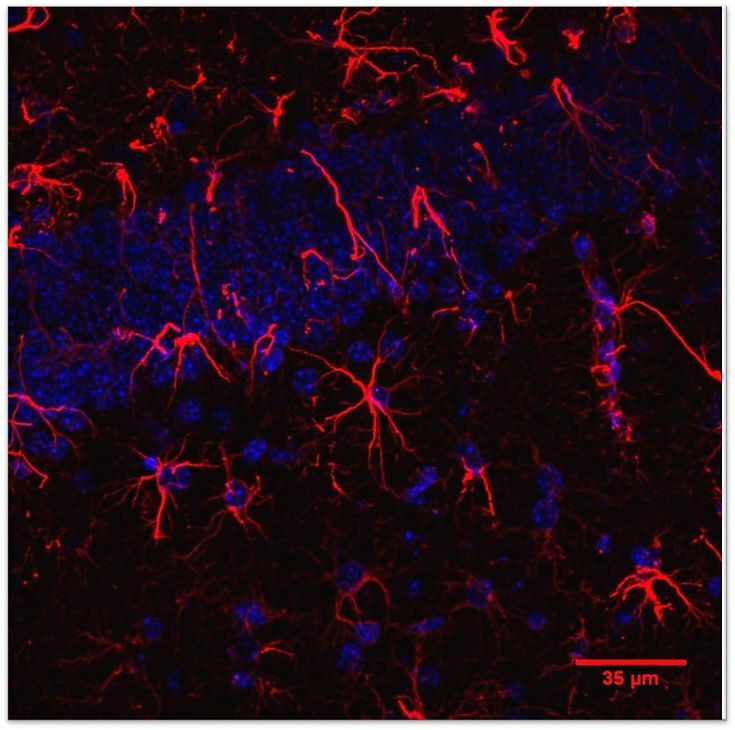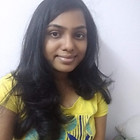
HELLO, I'M
Anjali Amrapali Vishwanath
Aspiring biologist and neuroscientist

Anjali Amrapali Vishwanath
PhD Candidate
Paris Brain Institute
Master of Science
Biology and Neuroscience
Bangalore, India
About
MY BACKGROUND
With a passion for understanding pre-existing mechanisms (top-down) and building or designing new ones (bottom-up), I am greatly interested in exploring research problems in biology, neuroscience and computational biology. I have both the skill set and professional background necessary to dive deep. As a self-motivated team player with excellent communication skills, I envision an exciting future in the research field. Browse my site to see all that I have to offer.
Education
WHAT I’VE LEARNED
2009-2010
Class X (10th Grade)
National Hill View Public School, Bangalore, India
GPA: 9.4/10.0
2011-2012
Class XII (12th Grade)
National Hill View Public School, Bangalore, India
Score: 82.6%
2012-2015
2015-2018
Master of Science (M.S)
Biological Sciences (through Coursework and Research)
Jawaharlal Nehru Centre for Advanced Scientific Research (JNCASR)
Deemed University, Bangalore, India
GPA: 6.61/8
Exams Qualified
NATIONAL & INTERATIONAL
Indian Institute of Technology- Joint Admission Test for MSc)
All India Rank 132
Council of Scientific & Industrial Research-University Grants Commission-National Entrance Test
All India Rank 75
Graduate Record Examination
Score: 310/340
International English Language Testing System
Score: 8/10
Previous Experience
WHERE I’VE WORKED
2011 (11th Grade)
Effect of acquired familiarity on lateralized utilization of the brain in climbing perch (Anabas testudineus), a freshwater fish
Project Supervisors:
• Dr. V.V Binoy, National Institute of Advanced Studies (NIAS), Bengaluru, India
• Dr. Anindya Sinha, National Institute of Advanced Studies (NIAS), Bengaluru, India
Effect of acquired familiarity on lateralized utilization of the brain in climbing perch (Anabas testudineus), a freshwater fish
The aim of this project was to study the effect of familiarity on the lateralized utilization of the brain in climbing perch, a type of fresh-water fish. In simple words, if two individual fishes recognize each other, will it change how they use their brain? As part of this, I performed behavioural studies on the fishes. This involved a 2-compartment tank where various 'test' fish and 'stimulus' fish were placed respectively. The eye preference the 'test fish' uses to view the different types of 'stimulus fish' was used as aread out of lateralized brain utilization. For a given 'test fish' the subject fish were either of the following: a) Familiar conspecific - fish of same species reared in same tank b) Unfamiliar conspecific- fish of same species reared in a different tank c) Familiar heterospecific - fish of different species reared in same tank d) Unfamilair heterospecific - fish of different species reared in a different tank. All responses were collected and analysed.
January-May 2017, May-August 2019
Study on the effect of mutations on a gene implied in Oro-Facial Digital Syndrome (OFDS)
Project Supervisor:
• Dr. Anuranjan Anand, Human Molecular Genetics Lab, Jawaharlal Nehru Centre for Advanced Scientific Research (JNCASR), Bengaluru, India
Study on the effect of mutations on a gene implied in Oro-Facial Digital Syndrome (OFDS)
This project involved the search of a novel gene responsible for Oro-Facial Digital Syndrome (OFDS). It is a group of disorders where the development of the face, oral cavity and digits (fingers and toes) is affected (1 in 50,000-250,000 births). Whole exome sequencing, chromosome segregation analysis and PCR was carried out for a OFDS patient cohort. Novel mutations in a gene were identified. cDNA of the major isoform (Isoform I) of this gene was obtained and corresponding mutant cDNAs were generated. My contribution involved making of a plasmid clone encoding the cDNA of the second isoform (Isoform II) encoded by the same gene. Site-directed mutagenesis was carried out to create the same mutations (found in the patient cohort). Cloned molecules were transfected into HEK293 cells. Finally, Immunocytochemistry and Western Blotting was performed for Isoform I, II and their respective mutant versions to identify changes in localization and protein properties caused by the mutations.
May 2017-December 2018
Effect of Syngap1 heterozygous mutation on astroglia
Project Supervisors:
• Dr. James P Clement Chelliah, Electrophysiology/Chelliah Lab, Jawaharlal Nehru Centre for Advanced Scientific Research (JNCASR), Bengaluru, India
• Dr. Narendrakumar Ramanan, Developmental Neurobiology Lab, Indian Institute of Science (IISc), Bengaluru, India
Effect of Syngap1 heterozygous mutation on astroglia
Intellectual Disability (ID) is a type neurodevelopmental disorder. It is characterised by impaired intelligence and impaired social functioning. Haploinsufficiency of SYNGAP1 (Synaptic Ras GTPase Activating Protein 1) gene leads to Non-syndromic ID. Restoring SYNGAP1 levels in adult mice does not rescue the disease phenotype. Therefore, there is a need to understand more about the disease mechanism and develop new therapeutic strategies. It is also important to study ID as it often co-occurs with complex disorders such as Autism Spectrum Disorders and Epilepsy. So far, work related to SYNGAP1 related ID has focused on neuronal dysfunction. The aim of my work was to identify the effect of this mutation on astrocytes and if so, whether it contributes to the disease pathology. This work is being pursued, as many publications have shown that astrocytes are affected and contribute to the pathology of various mental disorders.
January-December 2018
Role of Perineuronal Nets in Syngap1 heterozygous mutation
Project Supervisors:
• Dr. James P Clement Chelliah, Electrophysiology/Chelliah Lab, Jawaharlal Nehru
Centre for Advanced Scientific Research (JNCASR), Bengaluru, India
• Prof. Vidita Vaidya, Tata Institute of Fundamental Research, Mumbai, India
Role of Perineuronal Nets in Syngap1 heterozygous mutation
Perineuronal nets are extracellular matrix structures that appear around neurons towards the end of the critical period plasticity. Perineuronal nets have been show to regulate various aspects of neuronal plasticty and circuit behaviour. These have been shown to be altered in many neurodevelopmental disorders such as Schizophrenia. The aim of this project was to understand the effect of Syngap1 heterozygous mutation on perineuronal nets and how this contributes to the pathology of Intellectual Disability.
Skills & Languages
WHAT I BRING TO THE TABLE
Molecular Biology
Tissue Biology
o DNA, RNA agarose gel electrophoresis
o DNA extractions- bacterial, plasmid, mouse tail, PCR
o RNA extraction, cDNA synthesis qPCR
o Cloning- Restriction Digestion, Ligation, Bacterial Culture, Transformation, Colony PCR, Sequencing, Site-Directed Mutagenesis
o Animal handling, coony maintenance
o Whole animal perfusion and brain dissection
o DNA, RNA, Protein extraction and analysis by PCR, qPCR, SDS-PAGE and Western Blotting
o Cryosectioning and Immunofluorescence Staining
Cell Culture
o Secondary cell line culture:
▪ HEK-293 cell culture, passaging, transfection
o Immunocytochemistry, Lysate Preparation, Western Blotting for cell culture samples
o Primary cell culture:
▪ Isolation, Culture, Passaging and Differentiation of Neural Progenitor Cells (NPC)
▪ Astrocyte Culture and maintenance
▪ Primary neuron culture
▪ Co-culture of astrocytes and neurons
User-end Bioinformatics
Computer
o Primer Designing
o Global and Multiple Sequence Alignment
o Viewing and using basic biological databases
o Microsoft Office (Word, Excel, Powerpoint), Open Office
o Basic Programming
Languages
o English
o Hindi
o Kannada
o Gujarati
Awards
WHERE I SHINE
Events
CONFERENCE, SEMINARS, WORKSHOPS
❖ Received a Gold Medal for being the overall topper in Natural Sciences division during B.Sc. (2015)
❖ Received a prize for being topper in the subject of Microbiology during B.Sc. (2015)
❖ District level winner of BioQuiz, a biology quiz held by the State Government of Karnataka (2013)
❖ State and district level winner of BioQuiz, a biology quiz held by the State Government of Karnataka (2014)
❖ Third Prize in district level Microbiology Quiz held by AMI (Association of Microbiologists of India) (2014)
❖ Second Prize in an Inter Collegiate Seminar Presentation Competition held on National Science Day, Mysore (2015)
❖ Received All India rank of 132 in IIT-JAM a National Level Exam
❖ Qualified CSIR-NET, a national level exam
OUT OF OFFICE
Poetry
Trekking
Karate
Cooking
Reading
Art and Craft Work
Social/Environmental Work
❖ National Neuroscience Conference, held by Indian Academy of Neurosciences (IAN)-
2017
❖ Zeiss Workshop on Imaging, held at JNCASR-2017
❖ Seminar on “Mouse colony management, animal health, optimizing breeding
schemes, and more” held by The Jackson Laboratory (JAX), NCBS, Bengaluru-2017
❖ Seminar held by Association of Microbiologists of India (AMI), Mysore Chapter,
2015
Awards
WHERE I SHINE
❖ Received a Gold Medal for being the overall topper in Natural Sciences division during B.Sc. (2015)
❖ Received a prize for being topper in the subject of Microbiology during B.Sc. (2015)
❖ India BioQuiz winner of BioQuiz, a biology quiz held by the State Government of Karnataka (2013, 2014)
❖ Third Prize in district level Microbiology Quiz held by AMI (Association of Microbiologists of India) (2014)
❖ Second Prize in an Inter Collegiate Seminar Presentation Competition held on National Science Day, Mysore (2015)
Events
CONFERENCE, SEMINARS, WORKSHOPS
❖ National Neuroscience Conference, held by Indian Academy of Neurosciences (IAN)-
2017
❖ Zeiss Workshop on Imaging, held at JNCASR-2017
❖ Seminar on “Mouse colony management, animal health, optimizing breeding
schemes, and more” held by The Jackson Laboratory (JAX), NCBS, Bengaluru-2017
❖ Seminar held by Association of Microbiologists of India (AMI), Mysore Chapter,
2015
❖ Short term course: "Biostatistics: a user's perspective", IISER Pune, December 2018
❖ EMBO Workshop: “Molecular neuroscience: From genes to circuits in health and
disease”, held at NCBS, Bengaluru, February 2019
Interests
OUT OF OFFICE
Reading
Art and Craft Work
Social/Environmental Work
Posters
WORK PRESENTED
❖ Poster presented at In-House Symposium, JNCASR –2016, 2017 and 2018
❖ Poster presented at National Neuroscience Conference, held by IAN, Ravenshaw
University, Cuttack, Orissa –2017
References
PLEASE CONTACT:
1. Dr. Narendrakumar Ramanan
Associate Professor
Centre for Neuroscience (CNS)
Indian Institute of Science (IISc), Bangalore 560012, India
Email-ID: naren@iisc.ac.in
Phone number: +91-80-2293 3532
2. Dr. Anindya Sinha
Professor
National Institute of Advanced Studies
Indian Institute of Science Campus, Bangalore 560012, India
Tel: +91-80-22185117, Fax: +91-80-22185028
Email-ID: asinha@nias.iisc.ernet.in ; anindya.rana.sinha@gmail.com
Website: http://www.nias.res.in/professor/anindya-sinha